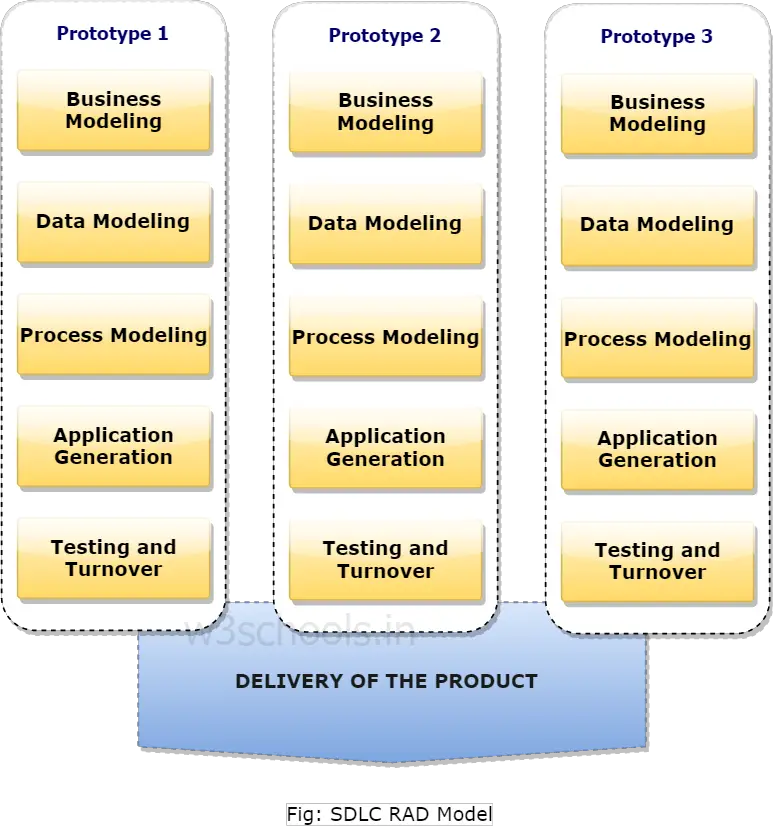Rapid Application Development Model in short form termed as RAD follows a "try before you buy" methodology for software development. It is another popular model for software development and has its characteristics and features. According to this approach, users can come up with better feedback when they can inspect a live system. This chapter will discuss all the features and structure associated with the RAD model.
What is RAD Model?
RAD which is abbreviated as Rapid Application Development Model, is based on the concepts of both iterative and prototyping development model. The Rapid Application Development model basically take prior attention on assembling customer desires in the course of workshop and development, and there is an emphasis on early testing of the system's prototype by the client or consumer using iterative methodology, then if based on the feedback - reuse the existing prototype(s) and stays in constant assimilation as well as rapid delivery. Here, in this model, the modules and pieces, as well as various functions, are developed in parallel in the form of mini projects to save the development time. These models and functions are boxed together, delivered and further assembled to form a working prototype.
More about the Working of RAD Model
A series of development cycles are carried out as prototype 1, 2 and so on which are low-level rejections with further feedback so that the actual model can be placed into production, With the incorporation of this model, there was a significant advancement in the software development methodologies and environments which follow quick generating of product as well as change of screens as well as other features from user's edge. Because of its approach, there leaves a minute or no scope for imagination, and for this reason, a considerable amount of errors get caught and reduced or solved at the very early stage.
Phases of RAD Model
The five stages of rapid application development (RAD) model are:
- Business Modeling Phase: The processed data flow is recognized from varieties of business perspective.
- Data Modeling Phase: Information that is taken from business modeling is then implemented for defining elements which are required for the business.
- Process Modeling Phase: Data modeling achieved after assimilating details from business information flow needs to be appropriately processed to come up with a prototype.
- Application Generation Phase: Various autonomous tools are employed for converting process models to code which is then finally converted to the actual system.
- Testing and Turnover Phase: All interfaces and modules are tested.

Benefits of Using RAD model
- Reusability of components makes or speeds up the development and reduces the time that it needs for developing a product.
- The modularized way of crafting each function within the system makes the development task easier.
- Large projects can be done easily through the RAD model.
Drawbacks of Using RAD model
- A proper time-frame should have to be maintained for both end customer as well as developers for completing the system.
- RAD model-based software development fails because of a lack of commitment and dedication.
- A slight complexity in the modularizing in RAD model can lead to failure of the entire project.